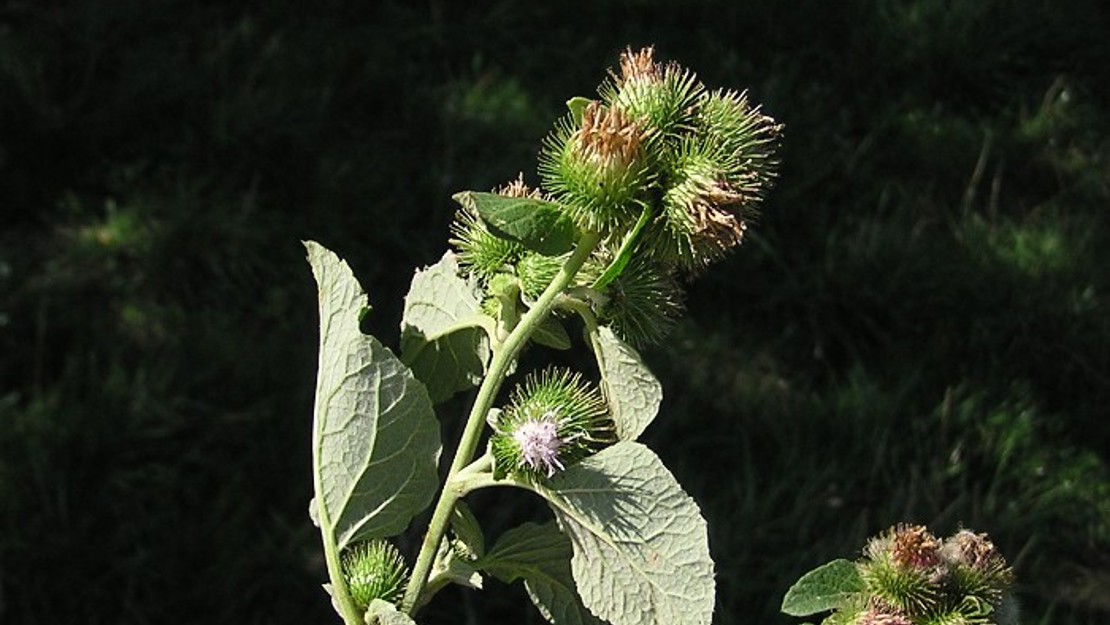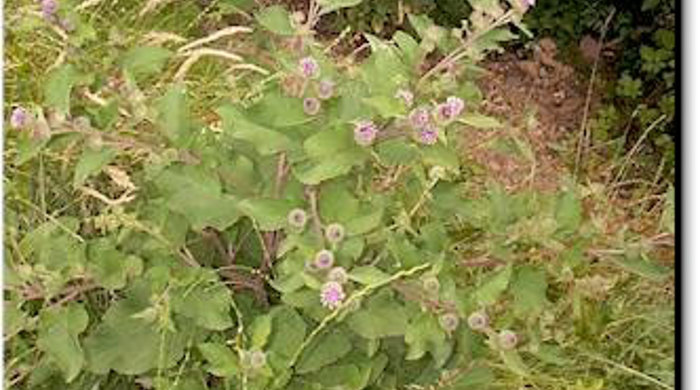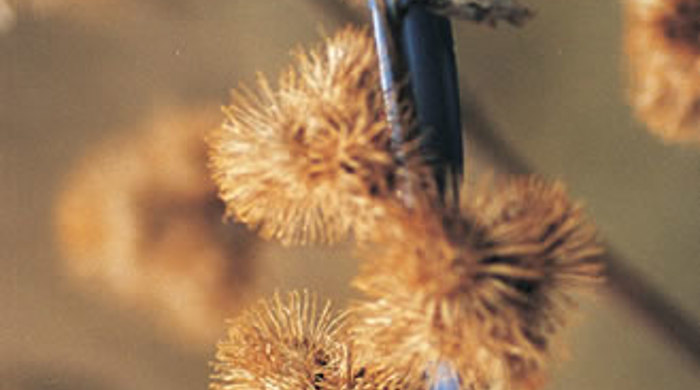Arctium minus
Burdock
Family: Asteraceae
Origin: Eurasia

Regional Pest Management Plan (RPMP) status
- Whole region — Sustained control
- Hauraki Gulf Controlled Area Notice pest
General description
Bushy, much-branched, thistle-like biennial forb < 1.5m tall. Leaves are < 50 cm long. Flowers are spiky green spheres with pink/purple centres and bracts that become hooked when dry, and are borne January – April. Seeds are attached to pappus.
What you need to know
To help protect our environment:
- You must not breed, distribute, release or sell burdock within the Auckland region. You must not plant burdock within the Auckland region, unless you are transferring an existing plant on your land to another location within the boundaries of the same property.
- You must destroy any burdock on land that you occupy if it has been planted in breach of the above rules and you are directed to do so by an authorised person.
Habitats
Forest margins, scrub, creek beds, pasture, gardens, wasteland, open and disturbed sites.
Dispersal
Seeds dispersed by wind, water, attachment to animals and humans.
Impact on environment
Burs contaminate sheep wool and injure livestock. Taints milk if foraged in large quantities. Reservoir for fungal diseases that could impact horticultural plants. Can cause contact dermatitis and toxic seed hairs may be irritating to pets and humans.
Control
Site Management
Maintaining good pasture cover will suppress an infestation. Mowing before flowering will reduce spread of burs. Control is most effective on first year rosettes.
Recommended approaches
Physical control
Method: Dig out.
Plant parts requiring disposal: Seeds (burs).
Disposal options: Remove to greenwaste or landfill if practical.
Biocontrol
Biocontrol is currently not available for this species.
Community agrichemical control recommendations
No qualifications: Foliar spray with 100ml glyphosate green per 10L of water.
Certified Handler/Experienced agrichemical user: Foliar spray with 100ml glyphosate green per 10L of water and 10ml penetrant.
Caution: When using any herbicide or pesticide please read the label thoroughly to ensure that all instructions and safety requirements are followed.






